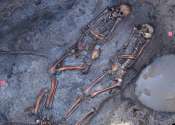Troubles in Tuva: Raids and bloody rituals among ancient steppe nomads
Ancient historiographers described steppe nomads as violent people dedicated to warfare and plundering. However, little archeological and anthropological data are available regarding violence in these communities during the ...









